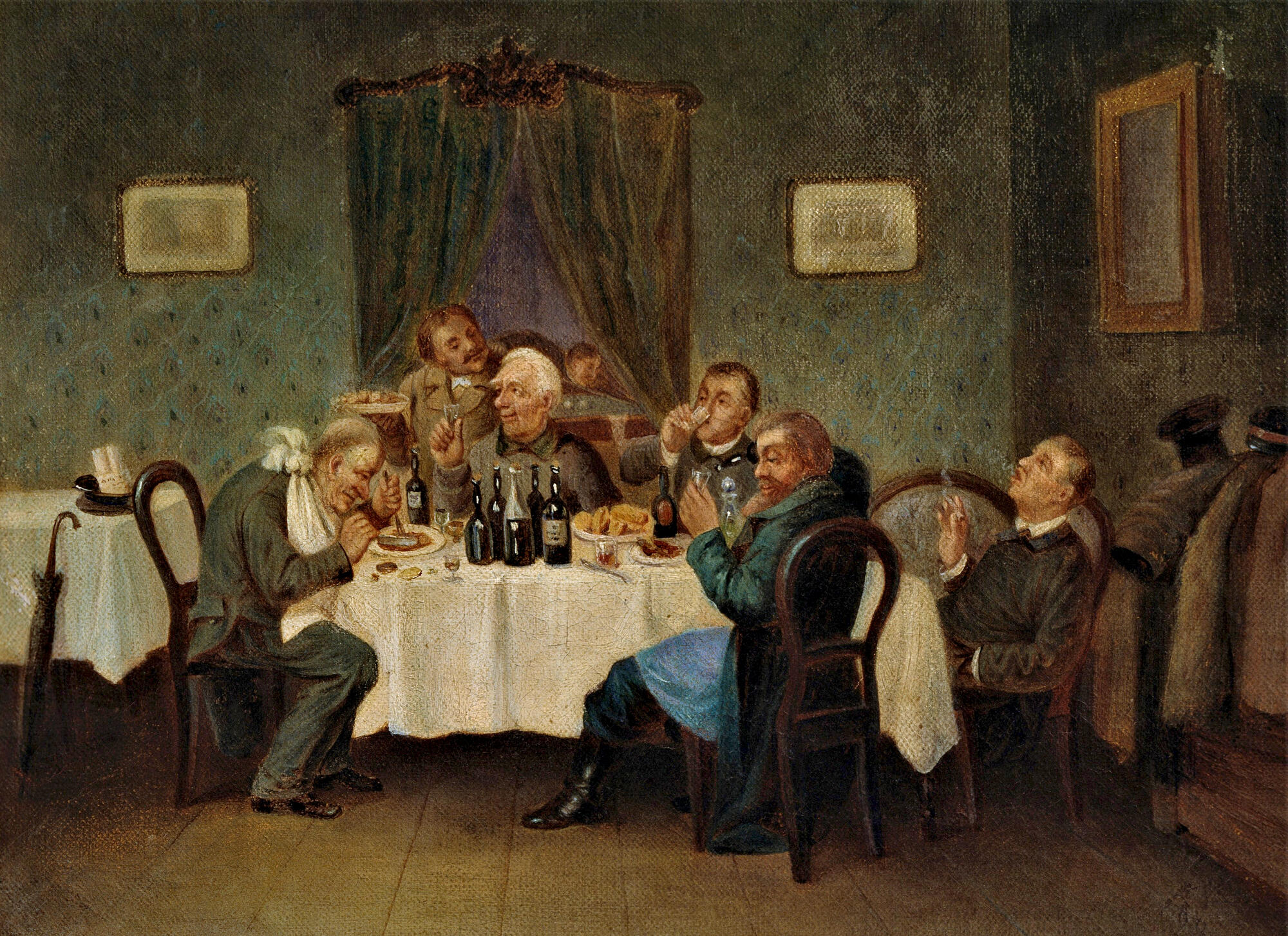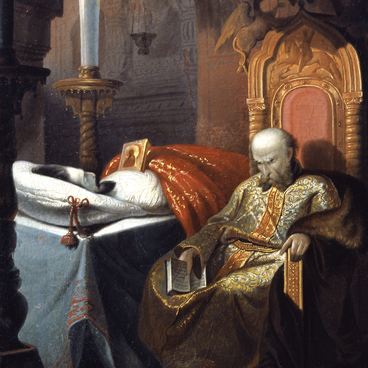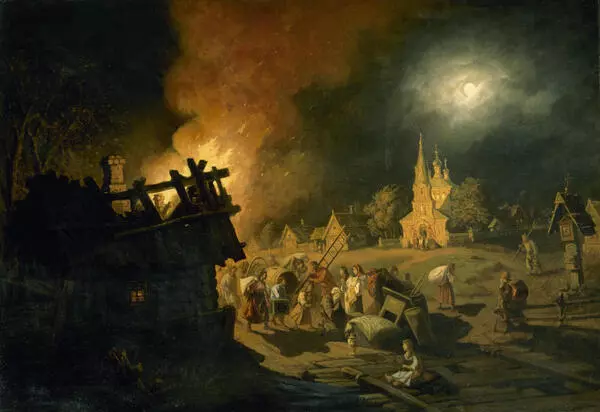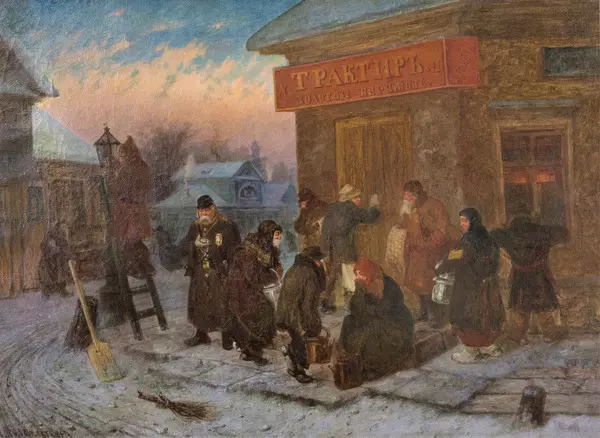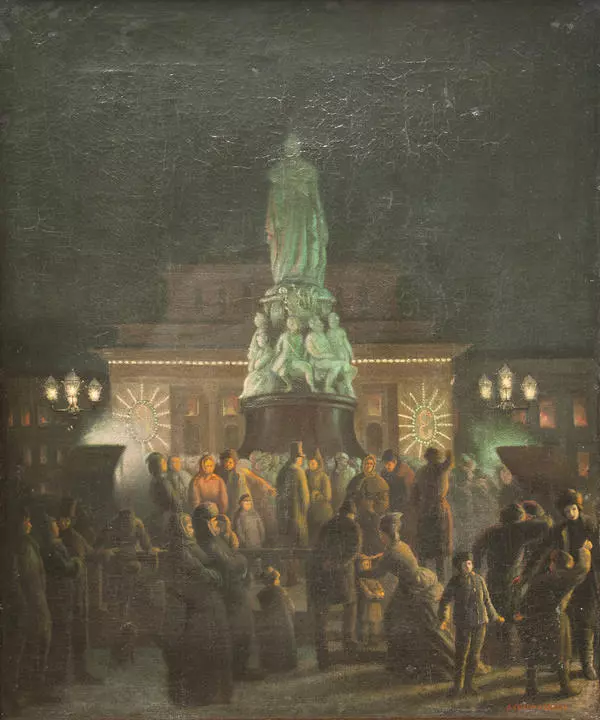Leonid Solomatkin is a Russian genre artist of the second half of the 19th century. He stepped into national art in the 1860s when the realistic art trend was finally developed, imbued with ideas of patriotism and commitment to the people in art. Exposal paintings appeared at the exhibitions of painters of the 1860s; the subjects of these paintings was life itself. Leonid Solomatkin was fully aware of this life in gruesome detail.
A descender from a poor peasant family, early orphaned, he had to earn on his own from thirteen. The young man traveled all over Russia: he observed villages brought to ruin, poverty in cities, and inhumanity of human relations. All this later was reflected in his work, which was representative of the so-called ‘fourth estate’ — the bottom of society: street vendors, wandering circus actors, organ grinders, and beggars.
Solomatkin received his professional education at the Moscow School of Painting and the St. Petersburg Academy of Arts. In 1864, for ‘The Glorifying Policemen’, often called Christmas Chorus, he was awarded a large silver medal. The success of the canvas led the artist to make several copies. In the future, this happened with other works, including the ‘Bachelor Party’. In this painting, the author depicted a feast of merchants and officials: there is a fair amount of tapped bottles on the table, the heroes have impertinent poses.
Solomatkin’s works are inherent in the dramatic plot, specific characters, grotesqueness. Clarity of the drawing, brightness, and saturation of coloring brings them closer to folk pictures. The author deliberately grotesquely portrayed his characters to express the horror and cruelty of life. The artist was also strongly influenced by the small Dutch genre painting. He enthusiastically studied in the Hermitage and by Russian artists like Vasily Perov and Pavel Fedotov, whose traditions he followed in his artwork.
Living through all his life in need, Leonid Solomatkin ended up in a hospital for the poor. Works by this artist are rare in the collections of regional museums. The painting was given to the Tula Museum by the native of the city, People’s Artist of the USSR, academician Porfiriy Krylov.
A descender from a poor peasant family, early orphaned, he had to earn on his own from thirteen. The young man traveled all over Russia: he observed villages brought to ruin, poverty in cities, and inhumanity of human relations. All this later was reflected in his work, which was representative of the so-called ‘fourth estate’ — the bottom of society: street vendors, wandering circus actors, organ grinders, and beggars.
Solomatkin received his professional education at the Moscow School of Painting and the St. Petersburg Academy of Arts. In 1864, for ‘The Glorifying Policemen’, often called Christmas Chorus, he was awarded a large silver medal. The success of the canvas led the artist to make several copies. In the future, this happened with other works, including the ‘Bachelor Party’. In this painting, the author depicted a feast of merchants and officials: there is a fair amount of tapped bottles on the table, the heroes have impertinent poses.
Solomatkin’s works are inherent in the dramatic plot, specific characters, grotesqueness. Clarity of the drawing, brightness, and saturation of coloring brings them closer to folk pictures. The author deliberately grotesquely portrayed his characters to express the horror and cruelty of life. The artist was also strongly influenced by the small Dutch genre painting. He enthusiastically studied in the Hermitage and by Russian artists like Vasily Perov and Pavel Fedotov, whose traditions he followed in his artwork.
Living through all his life in need, Leonid Solomatkin ended up in a hospital for the poor. Works by this artist are rare in the collections of regional museums. The painting was given to the Tula Museum by the native of the city, People’s Artist of the USSR, academician Porfiriy Krylov.
